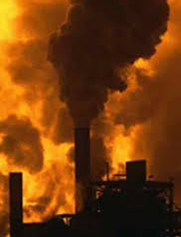New EPA Regs Will Hurt Economy, But Who Cares?
Thursday, June 5th, 2014 @ 7:32PM
Between the Lines
by Gary D. Halbert
On Monday, the Environmental Protection Agency proposed sweeping new rules (645 pages) which will require existing coal-burning power plants to cut carbon dioxide emissions by 30% by 2030. With the abject failure of “cap-and-trade” in President Obama’s first term, these new EPA regulations are his final attempt to appease his critics on climate change, despite the long-term negative effects on the economy and jobs.
Congress was not consulted on these sweeping new EPA regs, and did not pass any new laws on this issue. As has become increasingly commonplace, these controversial new regs will be put into law by another “Executive Order” from President Obama, who hailed the so-called “Clean Power Plan” as one of the strongest actions the government has ever taken to fight “climate change” – the new buzzword for “global warming” which the left has largely abandoned.
Today, we’ll look at what effects the new EPA regs will have on the economy, on jobs and on what we’ll be paying to heat and cool our homes in the years ahead. As noted above, the Clean Power Plan will require coal plants to cut CO2 by 30% by 2030, using 2005 emission levels as the baseline. So any reductions they have made since 2005 will count toward the 30% mandate.
It will take at least a year for the Clean Power Plan to become law. Once it is published in the Federal Register, the EPA will accept comments for 120 days and hold four public hearings starting in late July. The EPA will then finalize and publish the standards in June of 2015, and then states will be required to implement them, but legal squabbling might cause further delay.
Although the proposal is another attempt by President Obama to address issues of public policy without having to maneuver through a divided Congress, it is likely to face Republican opposition in court as a “job killer” and for good reason. Yet the mainstream media ignores all of the downside of the new regs, not surprisingly. So let’s get into it.
According to the EPA, there were 983 coal-fired plants operating in the US at the end of last year, and 63% of those are at least 40 years old. Although many have been updated, most of them are not as efficient as newer coal plants. The EPA says that coal plants are the largest source (38%) of the nation’s CO2 emissions.
The bottom line is that most of the nation’s coal-fired power plants will NOT be able to meet the EPA’s new CO2 emissions requirements, half of which must be achieved by 2020. This means that most of these power plants will be shuttered over the next 5-6 years.
According to the government, there are over 800,000 workers employed in the coal power industry. If most of those plants are shut down, most of those jobs will be lost.
In addition to the lost jobs, the loss of these coal-fired plants will mean higher electricity prices for businesses and consumers. The US Chamber of Commerce estimates that the new regs will cost businesses over $50 billion a year. I have not seen estimates on what it will cost consumers or what a blow that will mean for the economy, but they will be forthcoming.
Lawmakers from West Virginia, North Dakota, Kentucky, Louisiana, North Carolina and other states have already complained about the new EPA regs. The EPA actually admits that the new regs will increase energy prices but its top administrator, Gina McCarthy, says the added cost will be well worth it in terms of “public health and the environment.”
In 2008, while running for president, Obama admitted that his energy policies would cause electricity prices to “skyrocket.” Now that he’s not running for re-election, he is making good on that promise! This week, he launched his War On Coal.
Yet the mainstream media says virtually nothing. What else is new?
Posted by AIA Research & Editorial Staff
Categories: Between the Lines


